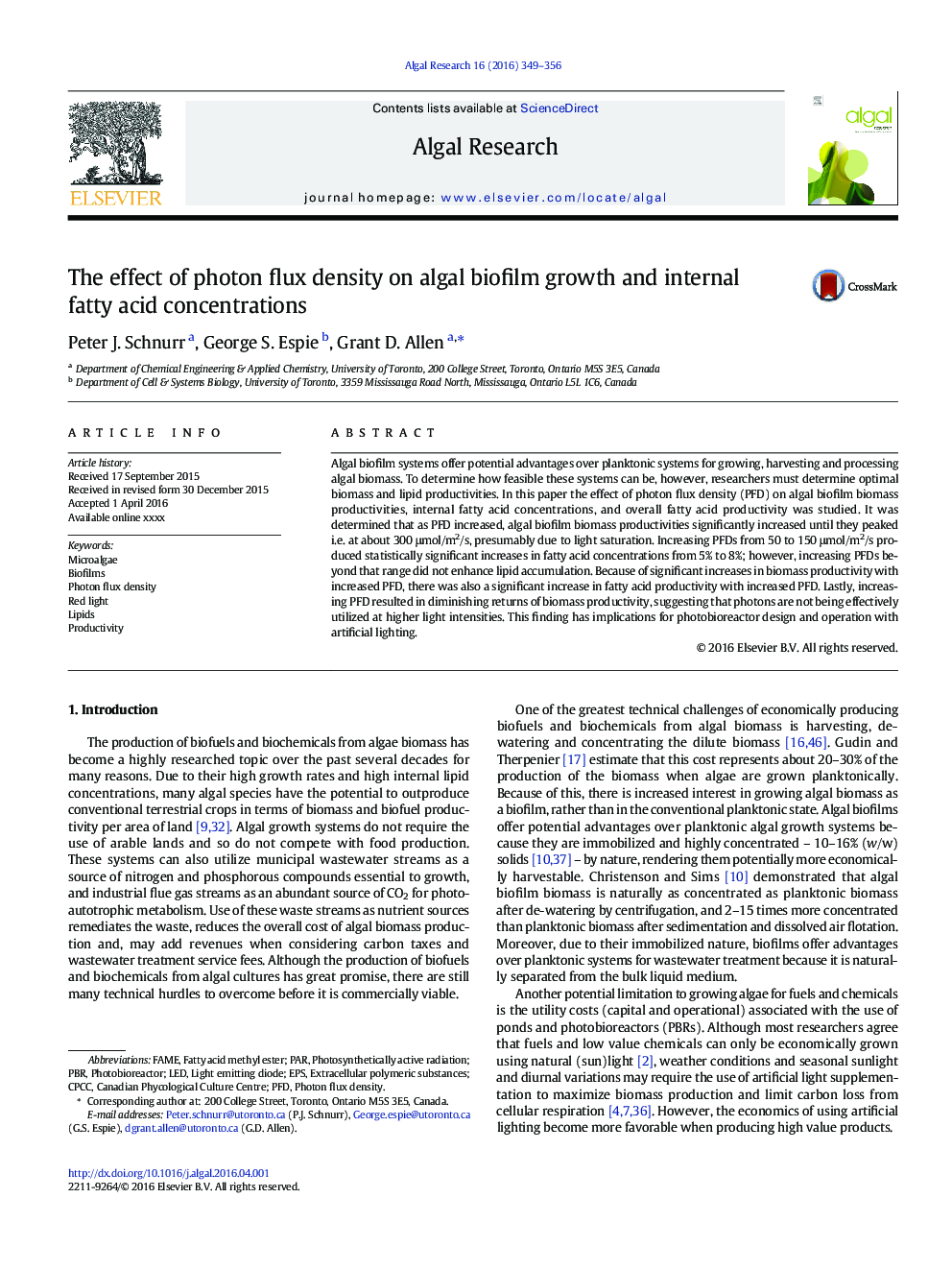| Article ID | Journal | Published Year | Pages | File Type |
|---|---|---|---|---|
| 8087084 | Algal Research | 2016 | 8 Pages |
Abstract
Algal biofilm systems offer potential advantages over planktonic systems for growing, harvesting and processing algal biomass. To determine how feasible these systems can be, however, researchers must determine optimal biomass and lipid productivities. In this paper the effect of photon flux density (PFD) on algal biofilm biomass productivities, internal fatty acid concentrations, and overall fatty acid productivity was studied. It was determined that as PFD increased, algal biofilm biomass productivities significantly increased until they peaked i.e. at about 300 μmol/m2/s, presumably due to light saturation. Increasing PFDs from 50 to 150 μmol/m2/s produced statistically significant increases in fatty acid concentrations from 5% to 8%; however, increasing PFDs beyond that range did not enhance lipid accumulation. Because of significant increases in biomass productivity with increased PFD, there was also a significant increase in fatty acid productivity with increased PFD. Lastly, increasing PFD resulted in diminishing returns of biomass productivity, suggesting that photons are not being effectively utilized at higher light intensities. This finding has implications for photobioreactor design and operation with artificial lighting.
Keywords
Related Topics
Physical Sciences and Engineering
Energy
Renewable Energy, Sustainability and the Environment
Authors
Peter J. Schnurr, George S. Espie, Grant D. Allen,
